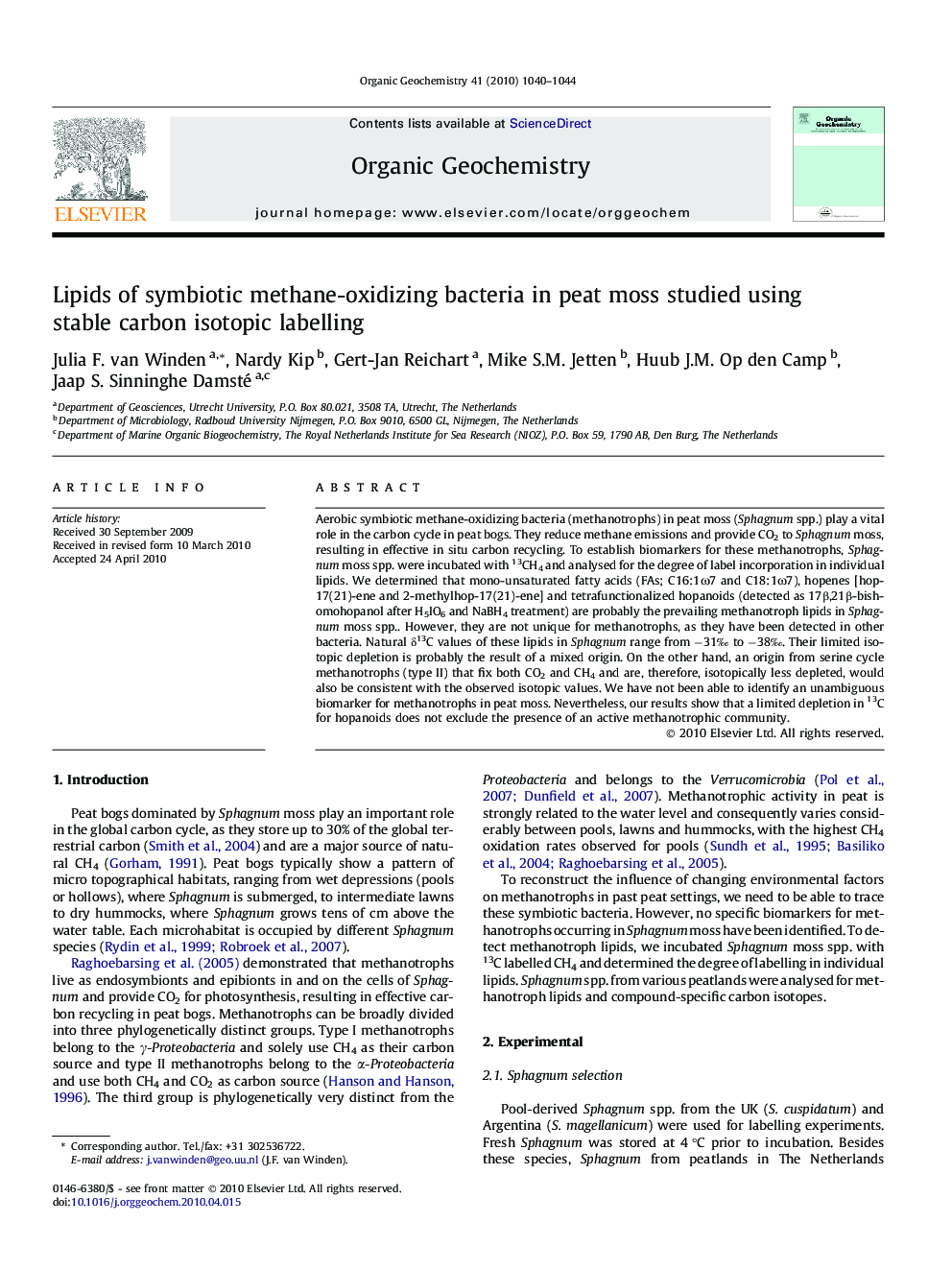| Article ID | Journal | Published Year | Pages | File Type |
|---|---|---|---|---|
| 5162612 | Organic Geochemistry | 2010 | 5 Pages |
Abstract
Aerobic symbiotic methane-oxidizing bacteria (methanotrophs) in peat moss (Sphagnum spp.) play a vital role in the carbon cycle in peat bogs. They reduce methane emissions and provide CO2 to Sphagnum moss, resulting in effective in situ carbon recycling. To establish biomarkers for these methanotrophs, Sphagnum moss spp. were incubated with 13CH4 and analysed for the degree of label incorporation in individual lipids. We determined that mono-unsaturated fatty acids (FAs; C16:1Ï7 and C18:1Ï7), hopenes [hop-17(21)-ene and 2-methylhop-17(21)-ene] and tetrafunctionalized hopanoids (detected as 17β,21β-bishomohopanol after H5IO6 and NaBH4 treatment) are probably the prevailing methanotroph lipids in Sphagnum moss spp.. However, they are not unique for methanotrophs, as they have been detected in other bacteria. Natural δ13C values of these lipids in Sphagnum range from â31â° to â38â°. Their limited isotopic depletion is probably the result of a mixed origin. On the other hand, an origin from serine cycle methanotrophs (type II) that fix both CO2 and CH4 and are, therefore, isotopically less depleted, would also be consistent with the observed isotopic values. We have not been able to identify an unambiguous biomarker for methanotrophs in peat moss. Nevertheless, our results show that a limited depletion in 13C for hopanoids does not exclude the presence of an active methanotrophic community.
Related Topics
Physical Sciences and Engineering
Chemistry
Organic Chemistry
Authors
Julia F. van Winden, Nardy Kip, Gert-Jan Reichart, Mike S.M. Jetten, Huub J.M. Op den Camp, Jaap S. Sinninghe Damsté,
